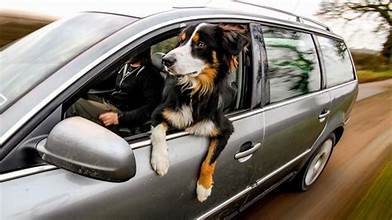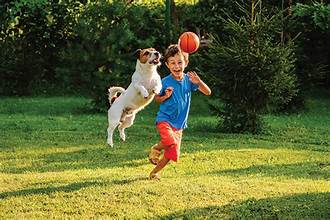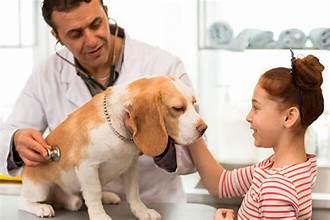Vet visits are necessary to keep your dog healthy but can also be stressful for pets and their owners. As a responsible dog owner, your role in preparing your furry friend for these appointments is crucial. With some preparation and understanding, you can help your dog feel more comfortable and relaxed. Here are some practical tips to make vet visits less stressful for your dog, including desensitization techniques and positive reinforcement.
1. Familiarize Your Dog with Handling
Veterinarians must often handle your dog—checking their ears, mouth, paws, or abdomen. To help your dog feel comfortable:
- Regularly practice gentle handling at home.
- Touch areas like their paws, ears, and mouth while giving treats or praise.
- Gradually increasing the duration of these sessions will build their tolerance.
2. Desensitize Your Dog to the Vet Environment
Introduce your dog to the sights, smells, and sounds of a vet clinic before an actual appointment:
- Take a tour:
Visit the clinic for non-appointment visits to let your dog explore the waiting room and meet the staff.
- Play vet at home:
To build familiarity, you can simulate vet procedures using a stethoscope or mimicking essential exams.
- Reward calm behavior:
Use treats and soothing praise to reinforce positive associations with these experiences.
3. Use Positive Reinforcement
Reward-based training helps your dog associate vet visits with positive outcomes:
- Bring your dog’s favorite treats or toys to the clinic.
- Praise and reward your dog for calm behavior during each process step, from the car ride to the exam room.
- Ask the vet staff to offer treats or engage with your dog in a friendly manner.
4. Condition Your Dog to Enjoy Car Rides
For many dogs, the journey to the vet is as stressful as the visit itself. Help them associate car rides with fun:

- Start with short, positive car trips to places your dog enjoys, like the park.
- Gradually extend the rides and end them with rewards.
- Use a secure crate or dog seatbelt for safety and comfort.
5. Practice Calm Behaviors
Teach your dog to relax on cue to help them stay calm:
- Use commands like “settle” or “place” to encourage relaxation in stressful situations.
- Practice these commands at home and gradually introduce distractions to mimic the vet environment.
6. Schedule Smartly
Timing can make a big difference in your dog’s stress levels:
- Book appointments during quieter hours to avoid crowded waiting rooms.
- Choose a time when your dog is naturally calmer, such as after exercise.
7. Bring Comfort Items
Familiar objects can help soothe your dog during a vet visit:
- Bring their favorite blanket, toy, or a piece of your clothing with your scent.
- These items provide comfort and a sense of security in unfamiliar surroundings.
8. Communicate with Your Veterinarian
Your vet can be a valuable partner in easing your dog’s stress:
- Inform the vet about any specific fears or triggers your dog has.
- Ask if you can stay with your dog during the exam to provide reassurance.
- Consider discussing mild sedatives or calming pheromones for particularly anxious dogs.
9. Exercise Before the Visit
A tired dog is a calmer dog. Before your appointment:

- Take your dog for a walk or engage in a play session to expend excess energy.
- Ensure the activity is relaxing and not overstimulating.
10. Be Patient and Consistent
Desensitizing your dog to vet visits takes time and persistence:
- Celebrate small wins, like calmly entering the clinic or allowing a staff member to pet them.
- Avoid forcing your dog into situations that cause panic, as this can worsen their anxiety.
Final Thoughts
Preparing your dog for vet visits requires patience, planning, and positive reinforcement. By familiarizing your dog with handling, desensitizing it to the clinic environment, and rewarding calm behavior, you can make these visits a smoother experience for both of you. This will not only reduce stress but also make future vet visits more manageable and efficient, giving you hope for a positive and stress-free experience.
Preparation at home is key to a happy, stress-free vet visit. Implement these tips today, and rest assured that your dog’s confidence will grow with each visit, making vet visits more manageable and less stressful.





Pingback: The 5 Most Dangerous Dog Diseases to Be Aware of - Positvley Pets